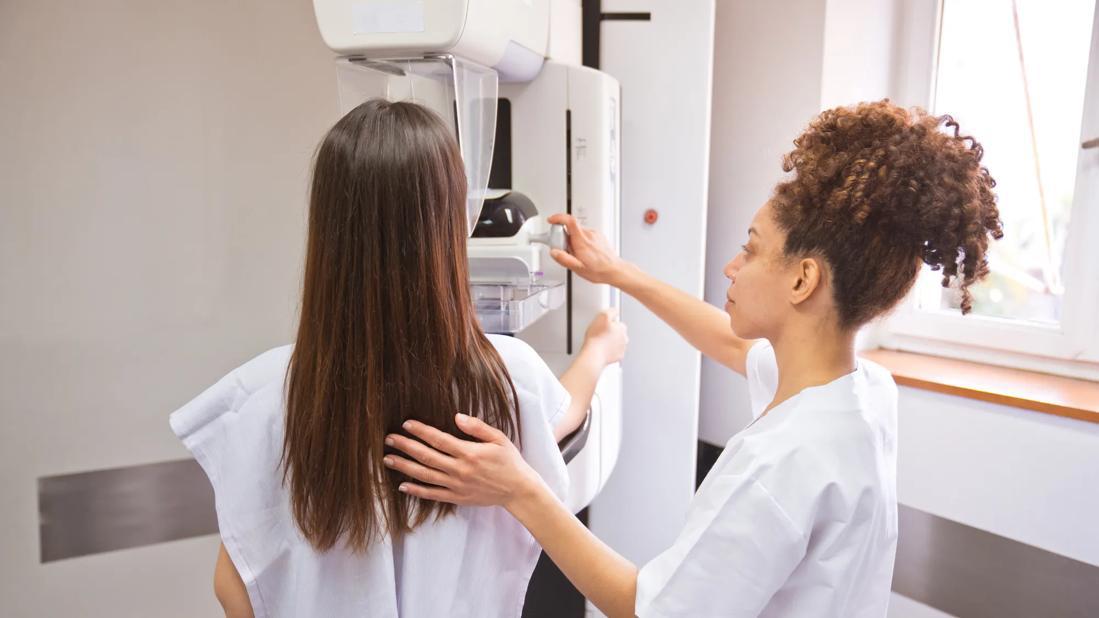Screening Mammogram vs. Diagnostic Mammogram: What’s the Difference?
They’re different versions of the same tool, all with the goal of early detection of breast cancer

You’ve probably heard it before: Mammograms save lives. This important testing tool can help identify breast cancer early, when it’s most treatable.
“For decades, mammography has been the gold standard for screening for breast cancer,” says diagnostic radiologist Laura Dean, MD. “And that technology continues to evolve and improve.”
But there are two categories of mammograms — screening mammograms and diagnostic mammograms — and if you’re not yet familiar with them, it can be hard to figure out the differences between the two.
Dr. Dean explains both types of mammograms, including when they’re used and why you might need one.
What’s the difference between a screening and a diagnostic mammogram?
You can think about screening mammograms sort of like you think about an annual physical: as preventive care. You have them done to look for the possibility of anything unusual or concerning — not because anything seems wrong but because you want to be sure nothing is.
“Mammography screening for breast cancer saves lives,” Dr. Dean states. “The science has shown us, over years and years, that the most lives are saved when screening mammography is performed regularly starting at age 40.”
A diagnostic mammogram, on the other hand, is done when you notice changes in your breasts, or if the results of your screening mammogram show anything concerning. This type of mammogram, which specifically focuses on any areas of concern, aims to find any abnormalities and figure out what’s causing your symptoms.
Screening mammogram
When you hear people talk about getting a mammogram once a year, they’re talking about screening mammograms — a preventive tool that looks for breast changes in people who aren’t showing any symptoms or signs of them. The goal is early detection of breast cancer.
“We’re looking for anything in your breast tissue that looks abnormal or different from your past mammograms, if you’ve had them before,” Dr. Dean explains.
Diagnostic mammogram
You can think of diagnostic mammograms as a “level up” from screening mammograms. They take a closer look at your breasts to investigate and better understand any abnormalities.
There are two times when you may need a diagnostic mammogram:
- When you’re having symptoms.If you tell your healthcare provider that you’ve developed a concerning new symptom — like feeling a lump, noticing an area of skin thickening or having nipple discharge — they’ll refer you to radiology for a diagnostic mammogram to investigate.
- After a screening mammogram.Sometimes, screening mammograms show an area of concern, like a lump, cyst or calcification. In this case, you’ll be called back to radiology for a diagnostic mammogram, which will take a closer look.
“Diagnostic mammograms help us problem-solve and see whether there is a real finding in the breast tissue,” Dr. Dean further explains. They sometimes take slightly longer than your screening mammogram and may be accompanied by other imaging tests, like an ultrasound or breast MRI.
Depending on the results of your diagnostic mammogram, you may be referred to a breast specialist for further examination or risk assessment.
Is one better than the other?
Neither type of mammogram is “better” than the other. You may need one of them or both of them.
Rather than thinking of screening and diagnostic mammograms as competing with one another, it’s more helpful to think of them as variations on the same thing: They’re similar tools that are used in different ways and at different times, all with the goal of early breast cancer detection.
So, which type do you need? That depends. When it comes to your annual mammogram, there are three options:
- You may have a screening mammogram that comes back clear, so you don’t need a diagnostic mammogram.
- Your screening mammogram may show an area of concern, which requires you to come back for a diagnostic mammogram.
- If you’re experiencing breast changes or other symptoms, you may skip a screening mammogram altogether and go straight to a diagnostic mammogram (with your healthcare provider’s referral).
Final thoughts on mammograms
If you’ve never had a screening mammogram, ask your healthcare provider whether it’s time for one.
“We always encourage people, by age 30, to have a conversation with their provider about detailed risk assessment,” Dr. Dean recommends. “Ask them: Are you at risk of having any kind of genetic predisposition to breast cancer? Are you at high risk for other reasons? Should you start earlier or more intensive screening? These are all questions we encourage you to start discussing early with your provider.”